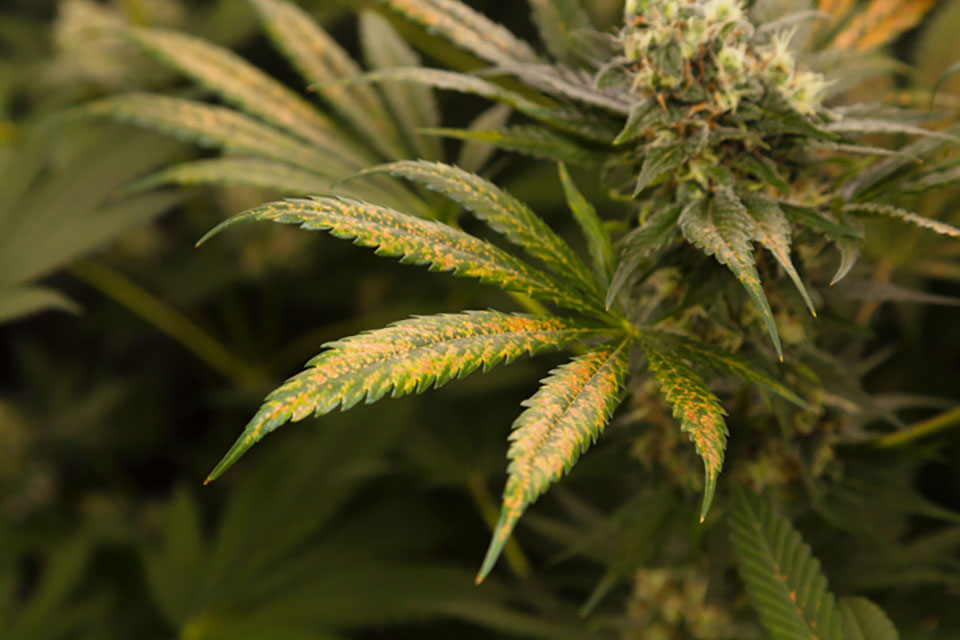
Cannabis plants, like all plants, are susceptible to deficiencies that can hinder their growth and development. As a home grower, it is crucial to understand the symptoms of these deficiencies to address them effectively and ensure your plants thrive. Kind Seed Co will explore how to spot eight common cannabis plant deficiencies by examining leaf symptoms. By understanding these symptoms, you can become a more knowledgeable and successful cannabis grower.
Whether you are a seasoned grower or just starting, this information can empower you to become a better cannabis cultivator.


Understanding the Role of Nutrients in Cannabis Plants Health
Cannabis plants require a whole host of nutrients to grow healthy and strong. Some of these nutrients include macronutrients like nitrogen, phosphorus, and potassium, as well as micronutrients like calcium, magnesium, iron, manganese, and zinc.
Deficiencies occur when these nutrients are not available in the necessary quantities. This could be due to low nutrient levels in the soil, incorrect pH levels, or problems with the plant's ability to absorb nutrients.
Spotting Plant Deficiencies by Leaf Symptoms
Deficiencies in cannabis plants are pretty easy to spot if you keep an eye on leaf symptoms.
Symptoms of plant deficiencies can range from leaf color changes to abnormal growth patterns. The key to diagnosing a nutrient deficiency is careful observation and an understanding of how each nutrient contributes to the overall health of the plant.
Nitrogen Deficiency
Nitrogen is crucial to the cannabis plant because it aids in protein synthesis and photosynthesis. When a plant is deficient in nitrogen, it typically shows in the leaves as they turn from a deep green to a light yellow. Older leaves also wilt, and the plant's growth may be stunted.
Phosphorus Deficiency
Phosphorus plays a vital role in facilitating energy transfer and storage in cannabis plants. Without enough phosphorus, a leaf’s veins can darken and the underside can turn a dark shade of purple. The leaves may also curl downwards, and the plant's overall growth slows down.
Potassium Deficiency
Potassium is essential for regulating the opening and closing of the plant's stomata, which are the pores that allow for gas exchange. A potassium-deficient plant exhibits leaf symptoms such as curling at the edges, yellowing or browning between leaf veins, and slow growth.
Calcium Deficiency
Calcium is fundamental for cell growth and development in cannabis plants. Calcium deficiency causes new leaves to become distorted, leaf tips may die, and buds may fail to develop. The leaves may also feel brittle or exhibit localized yellow or brown spots.
Magnesium Deficiency
Magnesium is an essential component in the process of photosynthesis as it forms the central atom of chlorophyll. Deficiencies in magnesium are usually characterized by yellowing between leaf veins on older leaves, while the veins themselves remain green.
Iron Deficiency
Iron is significant for the production of chlorophyll in cannabis plants. If a plant lacks iron, young leaves at the top of the plant will turn yellow, but veins remain green. This deficiency can also cause leaf tips to turn brown and die.
Manganese Deficiency
Manganese assists in the breakdown of carbohydrates and the production of oxygen during photosynthesis. A deficiency in manganese leads to interveinal yellowing on young leaves, necrotic spots, and stunted growth.
Zinc Deficiency
Zinc is involved in various enzymatic reactions and protein synthesis in the plant. A zinc-deficient plant exhibits leaf symptoms like reduced leaf size, interveinal chlorosis, and leaf curling.
Grow Healthy Cannabis Plants With Help From Kind Seed Co
The key to growing healthy cannabis plants is having a keen understanding of how to spot plant deficiencies by leaf symptoms. Being able to identify and address these problems ensures optimal plant health.
Kind Seed Co is always here as your primary resource for expert cannabis growing information, and we are committed to helping you in every step of your growing adventure.






